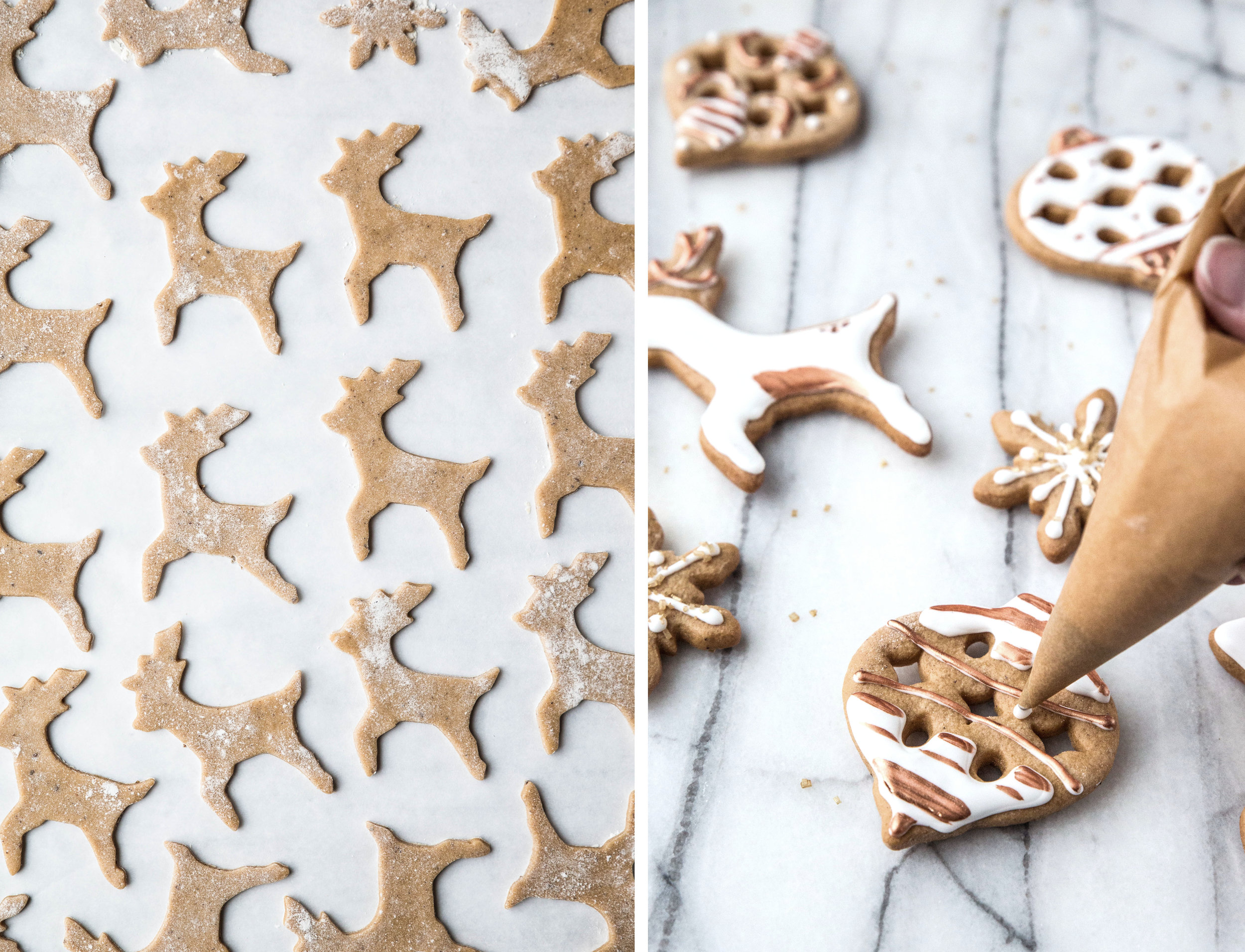Honey Cookies
/This honey cookie recipe has been passed down through four generations in my family. Shared between mother and daughter, grandmother and granddaughter, and cousin to cousin, this recipe is weaved throughout our family history. The honey cookies are guests at our holiday celebrations, making their appearance when family is gathered.
Growing up, the honey cookies were served out of large vintage yellow Tupperware container, brought in from the cold garage after the evening meal. By this time, the dessert table was already full, arranged with candies and cookies of all flavors and textures on brightly colored holiday plates. Since the honey cookies were a late arrival to the party (we would have certainly spoiled our appetites if they arrived sooner), they were placed on a nearby dining room chair. It didn't matter that the cookies were cold, or that they were not presented just so—everyone knew they were the genuine star of the holiday table.
Memories of holidays past bring up images of family laughing around the table, cousins sneaking extra cookies in pockets and up sleeves, and my grandfather reminding everyone, again, how much he loved these cookies.
These honey cookies are a modest spiced cookie, no flashy sprinkles or bright colors, but it is their simplicity that makes them beautiful. The recipe for these honey cookies is traditionally of German heritage, prepared over the stove instead of in a mixer. The sugars are brought to a boil before the mixture is combined with butter, eggs, and sour cream. Once the flour is stirred in, the soft dough is chilled in the refrigerator to stiffen. The baked cookies have a unique texture—soft, yet substantial.
These honey cookies hold so much nostalgia for me. The smell brings out the savory and sweet scents of Christmas Eve dinner. The sight carries images of my late grandfather telling everyone another story, cookie in hand. The taste—well, the taste is of home.
May these cookies bring you and yours as many memories as they have given me.
These soft Honey Cookies embrace the comforting flavors of the holiday—cinnamon, nutmeg, cloves, and anise. The spices come together beautifully and the addition of sour cream make these cookies soft to the touch and to the taste. An anise glaze may be added for a touch more flavor and a hint more sweetness. The cookies bake up smooth, which is perfect for decorating if you choose to do so. Share these cookies with family and friends during your holiday celebrations—perhaps you'll start a new tradition.
One Year Ago: Chocolate Cream Pie
Three Years Ago: Chocolate Sugar Cookies
Four Years Ago: Sugar Cookies
Five Years Ago: Red Wine Chocolate Truffles & Gingerbread Cookies
Six Years Ago: Candy Cane Popcorn
Seven Years Ago: Chocolate Truffles
Honey Cookies
Yields approximately 4 dozen cookies
1 cup (340 grams) honey
1 cup (200 grams) brown sugar, packed
3/4 teaspoon ground cinnamon
3/4 teaspoon ground nutmeg
3/4 teaspoon ground cloves
1/2 teaspoon anise extract*
1/4 cup (57 grams) butter
1/4 cup (60 mL) strong black coffee
2 large eggs, whisked
1/2 cup (113 grams) sour cream
1 teaspoon baking soda
1 teaspoon baking powder
5 cups (600 grams) all-purpose flour
In a large saucepan, bring the honey, brown sugar, cinnamon, nutmeg, ground cloves, and anise extract to a boil over medium-high heat. Once boiling, turn off the heat and add the butter and coffee. Allow mixture to cool to room temperature before adding the eggs, sour cream, baking soda, and baking powder. Stir well. Gradually mix in the flour to form a soft dough. Refrigerate for 6 hours or overnight, until the dough stiffens considerably.
Preheat oven to 350 degrees F. Line a baking sheet with parchment paper.
On a heavily floured surface, roll out dough to 1/4-inch thickness. Cut out 2-inch round cookies (or other shapes), re-rolling dough as needed. If you don't have a round cookie cutter, a water glass will also do the trick. Bake for 12 minutes, or until cookies are lightly browned and puffed. Cool completely before glazing.
Anise Glaze**
1 cup (227 grams) powdered sugar
1/8 teaspoon anise extract
2 teaspoons heavy cream, plus extra if needed
In a small bowl, mix together powdered sugar, anise extract, and heavy cream. If glaze is too thick, add more cream 1 teaspoon at a time until glaze is spreadable. Spread glaze onto cookies with an offset spatula and allow cookies to rest until glaze to set before serving or storing.
* 3/4 teaspoon anise seed can be substituted for the anise extract.
**In the photographs shown above, I decorated the cookies with a royal icing flavored with anise extract, but honey cookies are traditionally spread with or dipped into the anise glaze.

































